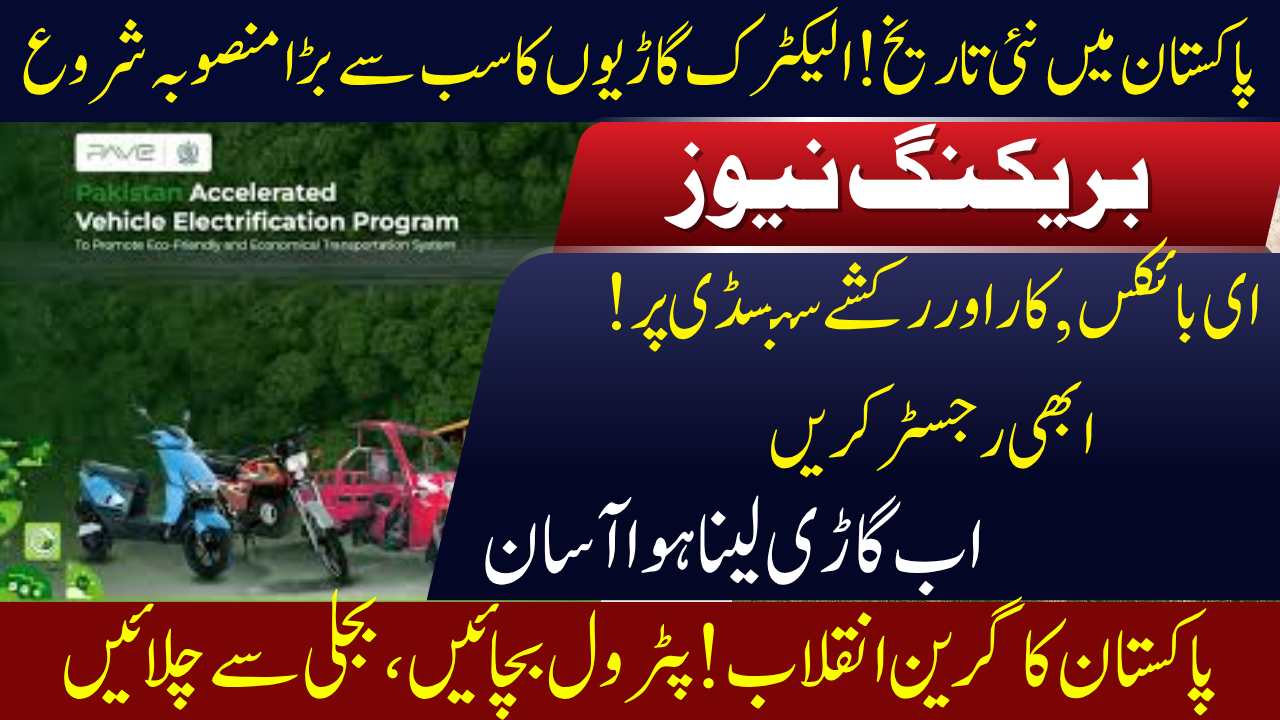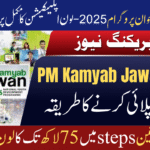Pakistan Accelerated Vehicle Electrification Program
Pakistan has officially launched the Accelerated Vehicle Electrification Program (PAVE 2025) to speed up the transition towards electric mobility. This landmark initiative is part of the National Electric Vehicle Policy 2025–30, aiming to reduce dependence on imported fuel, cut carbon emissions, and encourage sustainable transportation.
Key Goals of PAVE 2025
- Achieve 30% share of electric vehicles in new sales by 2030.
- Promote local manufacturing and reduce reliance on imported fully built EVs.
- Provide direct subsidies and installment plans for e-bikes, rickshaws, and electric cars.
- Develop EV charging infrastructure nationwide, including highways and urban centers.
- Save billions in fuel imports and improve environmental health.
PAVE 2025 – Quick Details in Table
| Feature / Target | Details |
|---|---|
| Policy Name | Pakistan Accelerated Vehicle Electrification (PAVE) Program 2025 |
| First Year Budget | Rs 9 Billion (FY 2025–26) |
| Subsidized Vehicles | 40,000 e-bikes, 1,000 e-rickshaws, 1,000 electric three-wheelers / cars |
| Subsidy Amounts | Rs 20,000 (bike), Rs 80,000 (rickshaw), Rs 290,000 (car) |
| Charging Infrastructure | 40 charging stations on motorways, battery swapping facilities, mandatory EV charging points in new buildings |
| Environmental Impact | 4.5 million tons annual CO₂ reduction |
| Fuel Savings | 2.07 billion liters of petrol/diesel annually |
| Health Benefits | $405 million per year in reduced pollution-related health costs |
| Digitalization | Online application portal, transparent verification system |
| Deadline (Phase 1) | 30 September 2025 |
Why This Program Matters
Pakistan spends billions of dollars every year on importing petrol and diesel. By shifting to electric vehicles, the country can:
- Reduce foreign exchange pressure.
- Improve air quality in major cities like Lahore, Karachi, and Islamabad.
- Create new jobs in EV manufacturing, assembly, and maintenance.
- Attract foreign investment in green technology.
Opportunities for Citizens
- Students and youth can benefit from affordable e-bikes.
- Small businesses and delivery riders can cut fuel costs with electric two-wheelers.
- Transporters can use e-rickshaws and electric three-wheelers to save on running expenses.
- Women and differently-abled persons are expected to get special quota benefits.
FAQs – Pakistan Accelerated Vehicle Electrification Program 2025
Q1: Who can apply for the PAVE subsidy?
Any Pakistani citizen above 18 years of age with valid CNIC can apply online through the government’s digital portal.
Q2: What is the deadline for Phase 1 applications?
The last date to apply in the first phase is 30 September 2025.
Q3: Will there be financing or installment options?
Yes, e-bikes and e-rickshaws can be purchased through subsidized financing and easy monthly installments.
Q4: Are imported EVs included in the subsidy?
The focus is on locally assembled EVs to promote Pakistan’s industry, but selected imports may qualify under special rules.
Q5: Where will charging stations be installed?
40 stations are being installed on motorways, with expansion planned in cities and rural areas.
Conclusion
The Pakistan Accelerated Vehicle Electrification Program 2025 is a game-changing step towards cleaner, cheaper, and smarter transport. By providing subsidies, financing support, and charging infrastructure, the government aims to make electric mobility accessible to millions. If implemented effectively, PAVE can reshape Pakistan’s auto sector, reduce pollution, and strengthen the economy.









